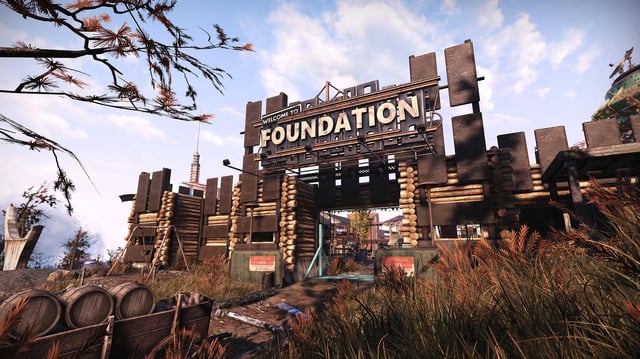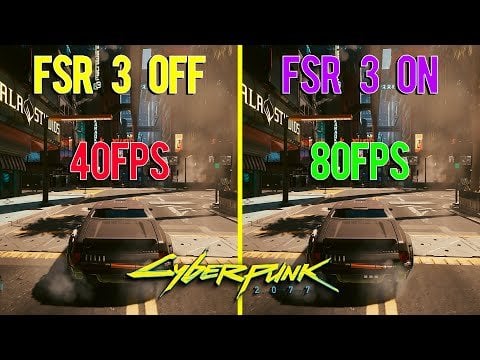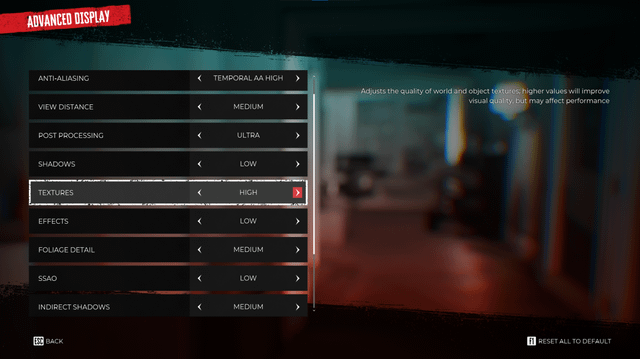Cyberpunk 2077: Phantom Liberty Review PC - Beauty or Bug-Ridden Mess?

Cyberpunk 2077: Phantom Liberty promised redemption, a chance to prove that CD Projekt Red could finally deliver on the dystopian dream they initially sold us. And while Dogtown is a visually arresting, morally bankrupt playground, and the narrative offers moments of genuine intrigue, the expansion stumbles in familiar ways. For hardcore PC gamers, the question isn't just "is it good?", but "is it fixed?" Let's dive into the grime, dissect the mechanics, and see if Phantom Liberty is a diamond in the rough or just another chrome-plated disappointment. Is Phantom Liberty worth buying after all the optimization and improvements from CD Projekt Red?
Gameplay & Mechanics: Relic Tree – Risky Business or Forced Novelty?
The Relic skill tree analysis is central to Phantom Liberty's gameplay overhaul. This new system, tied to V's deteriorating cyberware, offers unique abilities that can significantly impact combat. Imagine ricocheting bullets around corners or going berserk with optic camo, but at a cost. Each Relic ability carries a percentage chance of a "cyberware malfunction" – a temporary debuff that can leave you vulnerable.
The problem? The risk-reward dynamic feels artificially inflated. The temporary boosts rarely outweigh the potential downsides, especially when those downsides involve losing control at the worst possible moment. This mechanic draws parallels to the "mutagens" system in The Witcher 3, but falls short in strategic depth. Mutagens offered meaningful customization and synergistic effects, while the Relic tree feels more like a glorified debuff lottery. Instead of adding genuine tactical choices, it often feels like a forced novelty, interrupting the flow of combat with visually distracting malfunctions that do little more than obscure your vision. Does the Relic skill tree overpowered or balanced in the current meta? Hardly either, falling short on offering much for unique gameplay builds.
Narrative & Themes: Betrayal in Dogtown – FIA or FUBAR?
Political intrigue is the name of the game in Phantom Liberty, specifically the themes of betrayal and disillusionment within the FIA. You’re playing a double agent, navigating the treacherous waters of national security and personal loyalty. The narrative attempts to echo the unreliable narrator and meta-commentary on player agency found in Metal Gear Solid 2: Sons of Liberty. Both games deal with misinformation and the manipulation of the protagonist. However, Phantom Liberty lacks the same depth and philosophical exploration.
Is Songbird a genuinely sympathetic character, or just another manipulative agent playing V? The answer is frustratingly ambiguous. While the writing creates a compelling case for her plight, her actions are consistently suspect, leaving you questioning her motives until the very end. The story, while engaging, often relies on tired tropes of espionage and double-crossing, lacking the truly groundbreaking narrative twists that MGS2 delivered. Is the FIA storyline good or bad? It depends on how much you want to invest in the characters, but the lack of truly unique or compelling decisions might make the narrative fall flat for some players.

Graphics & Visuals: Dogtown’s Squalor – Beauty in the Breakdown?
Phantom Liberty introduces Dogtown, a lawless district carved out from Night City. We can skip the general ray tracing praise and focus on Cyberpunk 2077 Dogtown global illumination. The real test is how global illumination is used to create a sense of lived-in squalor in Dogtown's black markets. Environmental storytelling through lighting and asset design can make or break a setting.
The comparison to Metro Exodus is apt. Both games excel at using light and shadow to convey atmosphere. However, Metro Exodus achieved this with a consistent, almost oppressive, sense of dread. Dogtown's implementation is more inconsistent. While some areas are dripping with atmosphere, showcasing the grimy textures and realistic shadows, others just look like someone cranked up the contrast and added a blur filter. The promise of truly next-gen visuals is there, but the execution is uneven.

PC Performance: RX 7900 XTX – Frame Generation Salvation or Clever Masking?
The burning question: Is Cyberpunk 2077 Phantom Liberty optimized for AMD RX 7900 XTX? Let's ditch the marketing fluff and get to the hard numbers. Running Cyberpunk 2077: Phantom Liberty at 4K resolution on an AMD Radeon RX 7900 XTX is a demanding task, even before enabling path tracing. AMD FidelityFX Super Resolution 3 (FSR 3) frame generation promises to alleviate the performance hit, but does it deliver a truly "next-gen" experience, or just cleverly masked compromises?
In Quality mode, FSR 3 boosted frame rates from an average of 45 FPS to around 70 FPS. Performance mode pushed this further, hitting 90-100 FPS. However, these gains come at a cost. Perceived latency increased noticeably, resulting in a "floaty" feeling to the controls. Visual artifacts, such as ghosting around fast-moving objects, were also present, albeit less pronounced than in some other FSR 3 implementations. Compared to DLSS 3.5 Ray Reconstruction on NVIDIA cards, FSR 3 still lags behind in image quality and stability. While the frame rate gains are undeniable, the compromises are too significant for discerning PC gamers. Are Cyberpunk 2077 phantom liberty performance issues still present with the latest driver? Yes, the game can still present issues for players on high-end hardware, but the introduction of FSR 3 and DLSS have helped considerably.
| Setting | Native 4K FPS | FSR 3 Quality FPS | FSR 3 Performance FPS | Perceived Latency | Visual Artifacts |
|---|---|---|---|---|---|
| Path Tracing ON | 30-35 | 50-55 | 65-70 | Noticeable | Moderate |
| Path Tracing OFF | 45-50 | 70-75 | 90-100 | Slight | Minor |
Overall Experience: Dogtown vs. The Casbah – Meaningful Resilience or Technical Bandage?
Dogtown, much like the Casbah district of Algiers, evokes a sense of resilience, resourcefulness, and the struggle for autonomy in a lawless environment. The haphazard architecture, the crowded marketplaces, and the ever-present threat of violence create a palpable sense of desperation and defiance. But does Dogtown provide meaningful side content that genuinely expands the lore and explores the lives of its inhabitants, or is it just a collection of repetitive fetch quests and shooting galleries? The answer, unfortunately, leans towards the latter. While some side quests offer glimpses into the lives of Dogtown's residents, many devolve into generic tasks that fail to capitalize on the unique setting.

Is the world engaging, or does it feel artificially propped up with technical bandages? The truth lies somewhere in between. Dogtown is a visually impressive and conceptually intriguing location, but its potential is ultimately undermined by repetitive gameplay and inconsistent execution. The best Dogtown Cyberpunk 2077 comparison comes close, but doesn't deliver on a truly unique open world experience.
Verdict: Worth the Trip to Dogtown?
Cyberpunk 2077: Phantom Liberty is a step in the right direction, but it's not the complete redemption arc some were hoping for. The narrative offers moments of genuine intrigue, Dogtown is a visually compelling setting, and FSR 3 provides a performance boost (albeit with compromises). However, the Relic skill tree feels underdeveloped, the story relies on tired tropes, and the technical issues, while improved, are still present. Is Cyberpunk 2077 Phantom Liberty worth it on PC? For hardcore PC gamers willing to tinker with settings and tolerate some visual artifacts, it's a qualified "yes." But temper your expectations. Phantom Liberty is a flawed masterpiece, a glimpse of what Cyberpunk 2077 could have been, held back by its own baggage. Wait for a sale, and be prepared for a bumpy ride.
Viral Video Specification
VIDEO TITLE: Cyberpunk 2077: Path Tracing...Still Buggy in Dogtown?!*
- HOOK: Extreme close-up of V's cybernetic eye glitching violently, with distorted reflections exaggerating the malfunction amidst the overblown neon lights of Dogtown. The eye flickers erratically.
- SCENE: Cinematic 4K, but deliberately corrupted. Low-angle camera reveals Dogtown in its chaotic glory, showcasing graphical glitches – flickering textures on market stalls, disappearing NPCs in crowded areas, exaggerated bloom effects so intense they obscure details on the neon signs, and a vehicle chase in the background abruptly clipping straight through a building.
- TWIST: The camera pans across the scene, showcasing all the visual glitches, and lands on Johnny Silverhand, who shrugs at the camera with a completely deadpan expression and says, "Welcome to the future, choomba." The final screen displays a small, sarcastic disclaimer: "Path Tracing Experimental. May Cause System Instability. And Nausea. And Spontaneous Combustion."